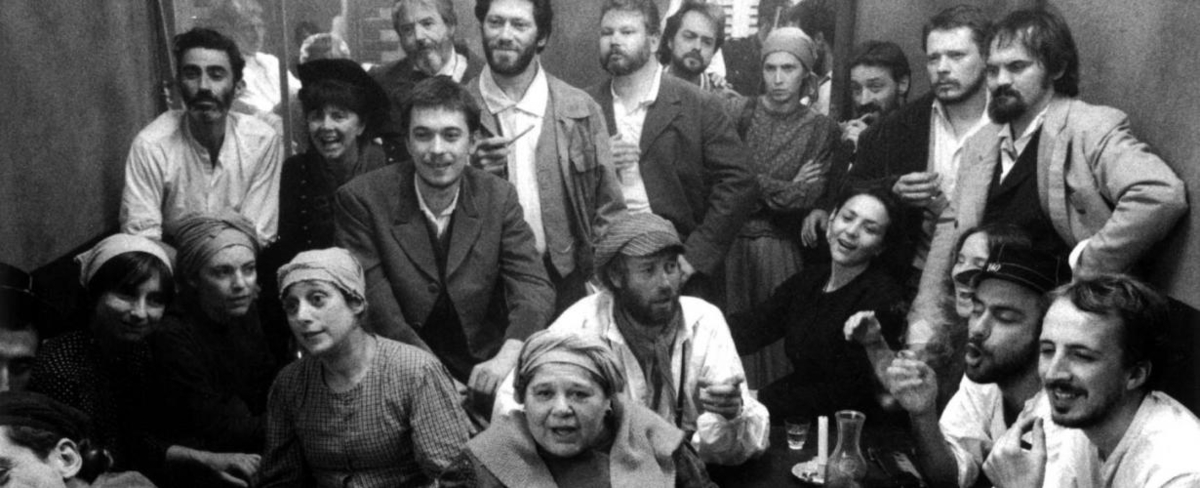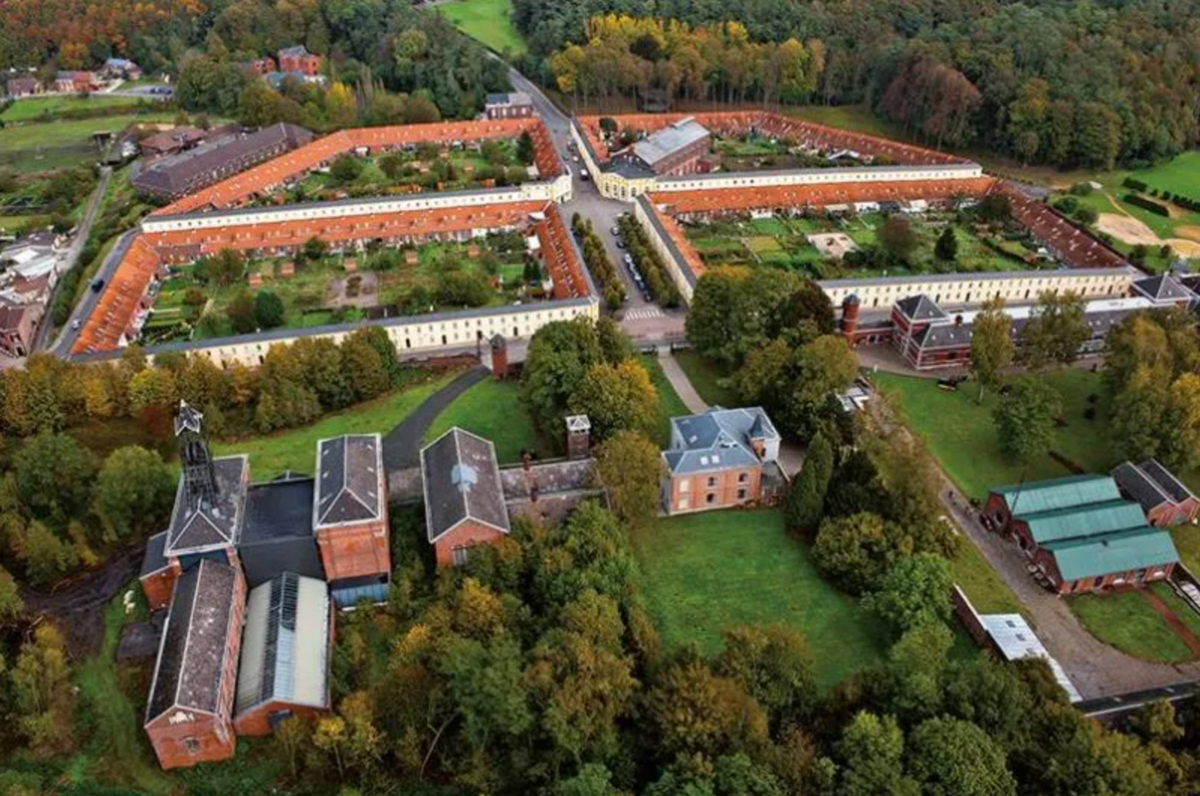The research plan: Nina de Vroome
This interview is part of a series of interviews made at the start of Veldwerk III. They offer a glimpse into the practice of the participating artists and sound out how they begin their research project. On this website you can also follow the rest of their trajectory. Speaking here: Nina de Vroome.
I discovered Bois-Du-Luc several years ago, traveling with my mother. We visited the mining museum there and stumbled upon a cité that was still inhabited. While eating our sandwiches, we met a group of children playing. We told them that we were from the Netherlands, to which they asked very sincerely if we had color television there. For a moment it seemed as if they lived in a closed world, far away from reality. Of course that is not really the case - besides, children always live a bit in the closed world of their imagination - but it made me think of that cité as a world in itself.
I also immediately made the link to Louis Paul Boon's The Forgotten Street. That book tells the story of a dead-end street that, during the modernization of a city, is completely cut off from the world by the construction of a railroad. The people who live there create a microcosm, a utopian society . Because Bois-Du-Luc seems so secluded, I wonder if some kind of miniature society existed here too, and how the shape of this cité determines the way people live with each other. The underlying structure formed by industry and a common struggle for social rights is gone. What remains is history and architecture. A history of demonstrations and common goals, an architecture focused on control. For example, the director's house was built so that he could have an overview of the workers' houses.
Every aspect of that place was conceived from an idealistic and paternalistic premise. The exploitation of the workers was not only of economic importance, but equally an ideological project. The management was like a father watching over workers' life. Social life was completely organized by him: the café with parish hall, the brass band, the church, etc. Most of the money earned in the mine was spent within the cité, creating a community that was controlled in every aspect. At the same time, you can also look at it through nostalgic glasses. The working conditions were horrible, but people were involved with each other. Now everyone lives more comfortably, but fundamentally lonelier.
I want to approach Bois-Du-Luc from different points of view. You can look at how the cité was created from the perspective of the mine, from the point of view of history, but also from the point of view of tradition or folklore. For example, there is the tour of the statue of St. Barbara.
I think the idea of a re-enactment to connect with history is an interesting one. That way you can literally bring history to life. The tour of Saint Barbara is a tradition that was almost extinct but has now been picked up again, which in itself is almost a re-enactment of a religious tradition. I think it would be interesting to bring some things from the mining history to life.
I found an important example of this in La Commune (2000) by film director Peter Watkins. The film is a historical re-enactment of the Paris Commune in 1871, where a group set up their own community built on a more just system with gender equality, fairer wages for workers, collective decision-making, etc. The proletariat was played by workers and people from immigrant backgrounds. The elite was played by wealthy Parisians. With them, Watkins went through old texts and pamphlets, reading and informing themselves. It was an invitation to enable political thinking. Re-enacting the events of 1871 through who they are today gave the participants a very direct relationship to that history. Not just as something in the past, but as something that exists today and can be revived.
Still from La Commune, Peter Watkins (2000)
The courtyard gardens also offer an interesting perspective on the place. I wonder if there is interest in starting a collective project there together. How exactly this would work I don't know yet, but in any case I want to look for local collaborations. Musicians who want to organize a concert in the kiosk, someone who knows a lot about garden maintenance and wants to help out,... It is important that I do not organize everything, but also bring people into contact with each other. In this way, perhaps new habits or lasting encounters will develop, with the garden at the heart of a collective project.
Film is an interesting medium for bringing different perspectives together. It is a way to think audiovisually about a place. It has something chaotic yet focused. I also write, but for me that's more of a way to turn contemplative observations into text. Film is more unpredictable, more dangerous. You try things and are very vulnerable in that. That's exciting.
Moreover, it's a perfect alibi to talk to people and search together. There is something performative about that, because as soon as you point a camera at someone, that person is going to "do" something and it becomes a cinematic act. In doing so, I tend to be more ignorant, even though I have done research beforehand. When I review rushes back from recorded conversations, I notice that I talk very little and drop long silences. Those openings cause people to start talking. I am guided by chance encounters that come from my presence in the place.
I am often concerned with the relationship people have with "nature" and our man-made environment. We create a fiction of nature around us, while in reality these are architectural, urbanistic and political choices. Decisions are made everywhere, about the size of nature areas, how that nature should be maintained, in what way land use can become ecological, etc. In Belgium and the Netherlands, there is no wilderness. Nature consists of parks with or without fences around them. Experiencing a wilderness is still something else. There you feel that there is a world that does not need us. I myself grew up in a village, played a lot in the woods and got a sense of wilderness there, of vastness, chaos and even a hint of danger. Looking at that environment now, I notice how much every plot is controlled and maintained. I realize that the experience of "nature" with us is primarily a fantasy evoked pre-eminently by children.
At the same time, there are movements that want to upgrade that romantic image. Just think of the BoerBurgerBeweging in the Netherlands. They portray farming as a family affair on a farm with a few animals. That has little to do with reality. Instead, farmers are forced to get bigger and bigger, take out gigantic loans and invest heavily in automation and economies of scale. I find the fiction of farming, and the political power of that representation, very interesting.
It is becoming increasingly difficult to give my naive gaze full freedom. At the same time, I believe that as an artist you are not a scientist. You should not try to become an ethnographer. Maybe that is precisely why I find the genre of documentary interesting, because it can have something very old-fashioned and didactic: it can show a piece of the world, as if you were in a class. In my last film Globes, I experimented with that didactic language. How can I explain things in a beautiful way and turn that into a cinematic experience? When you think about how to explain something, it also challenges you to think about form. For example, where do you need a close-up to magnify something to make it clearer? Film is always a schematization and reduction of reality. If you take that reduction as a starting point, you arrive at an interesting question. Many films or documentaries try to get as close to reality as possible, without showing that it is just a cutout. I find it interesting to focus on that cutout. That's why I also like to literally zoom in on things, so that you can see how the fragments form a whole together.
Bois-Du-Luc attracts me because of its apparent simplicity. Viewed from above, it is a cross, a very schematic shape. I can imagine working with vignettes that together give a cutout of that place.
Here you see a picture of the cité: around the cross are the workers' houses. Going south, you come to the director's house, which thus overlooks the main road of the cité. To its left is the entrance to the mine. Note that the miners always walked past the director's house on their way to work. The location of the director's house was most prominent in the ground plan, not the mine itself. So this says a lot about the concept of the cité. The director's house as the center of gravity, not the mine. The director is the literal director of the workers' lives. He controls, pays out, fires or hires, and organizes the whole life of the workers. Every day on their way to the mine they are reminded of this.
What else stands out are the large green spaces in the middle of the housing blocks. There are a number of trees, small gazebos, and they are divided into individual plots. I am curious to know what these spaces used to be used for, whether there was or is communal land and what it is used for. Do children play there, do vegetables or fruits grow there?
No cars can be seen in the photo either. Perhaps there are some under the row of trees in the main avenue now. The cité was not built for people with cars. People went by foot from home to work, from work to cafe and store. There was much less outside world than today. People lived their lives in the cité. Today, people live much more connected to surrounding villages and towns, travel much greater distances. I wonder how today's residents experience their geographic separation - or segregation. How are they now connected to the outside world?

